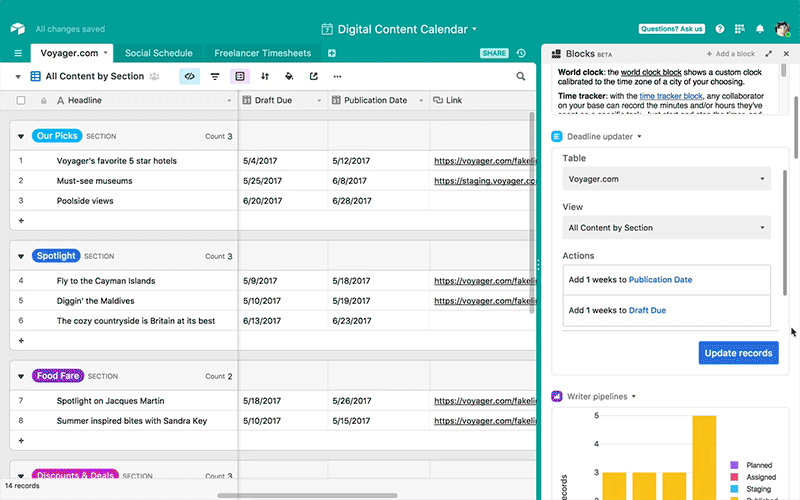If you're not getting new content out there for your company every day, whatever content you do manage to publish will get lost in the shuffle.
But publishing new content every day can get exhausting and daunting fast—it's easy to fear that you'll run out of ideas or energy at any moment.
Luckily, your greatest source of inspiration is probably staring you in the face. By remixing, reusing, and republishing existing content, you'll be able to confidently publish new high-quality content every day, with a constant wellspring of new ideas.
In this article, we'll use the example of an in-house content marketing team at an email marketing automation company to illustrate how you can integrate the 3 R's into your content production pipeline.
#1: Remix successful content to create new, de-risked content
Putting out a brand new piece of content is a little fear-inducing. Before you hit that “publish” button, you may ask yourself: “What if no one reads it?” “What if no one cares about it?” “Was this worth writing?”
You can mitigate these dangers by remixing content: taking a few articles that other people have already found great success with, and combining them into a brand-new article. This article will be de-risked: there's a good chance that it will be popular, since it was made by combining a variety of popular articles.
As your content marketing grows, though, there's a danger that everything you read about your particular subject area online will blend together. Without a clear framework for tracking which successful articles you've found, and which article you've written based on those articles, it's easy to lose focus and end up either blindly repeating yourself or repeating others. Your Airtable base gives you the framework to avoid these problems.
Say you've found a very successful guide on improving click-through rates, which someone published on Online Publication #1, and you've found a very successful list of tips on making engaging emails, which someone published on Online Publication #2.
Based on the success of these two articles, you can create a new, de-risked article by extracting the best advice from the “Ultimate Guide to Improving Click-Through Rates” and creating a “Top 5 Tips” article about click-through rates to publish on Online Publication #2. The result is a piece that strategically captures the core insights from a popular article, and repackages them in a different format to help a brand-new audience of people with those same insights.
You can make a record of your remixed article in your Our Articles table.
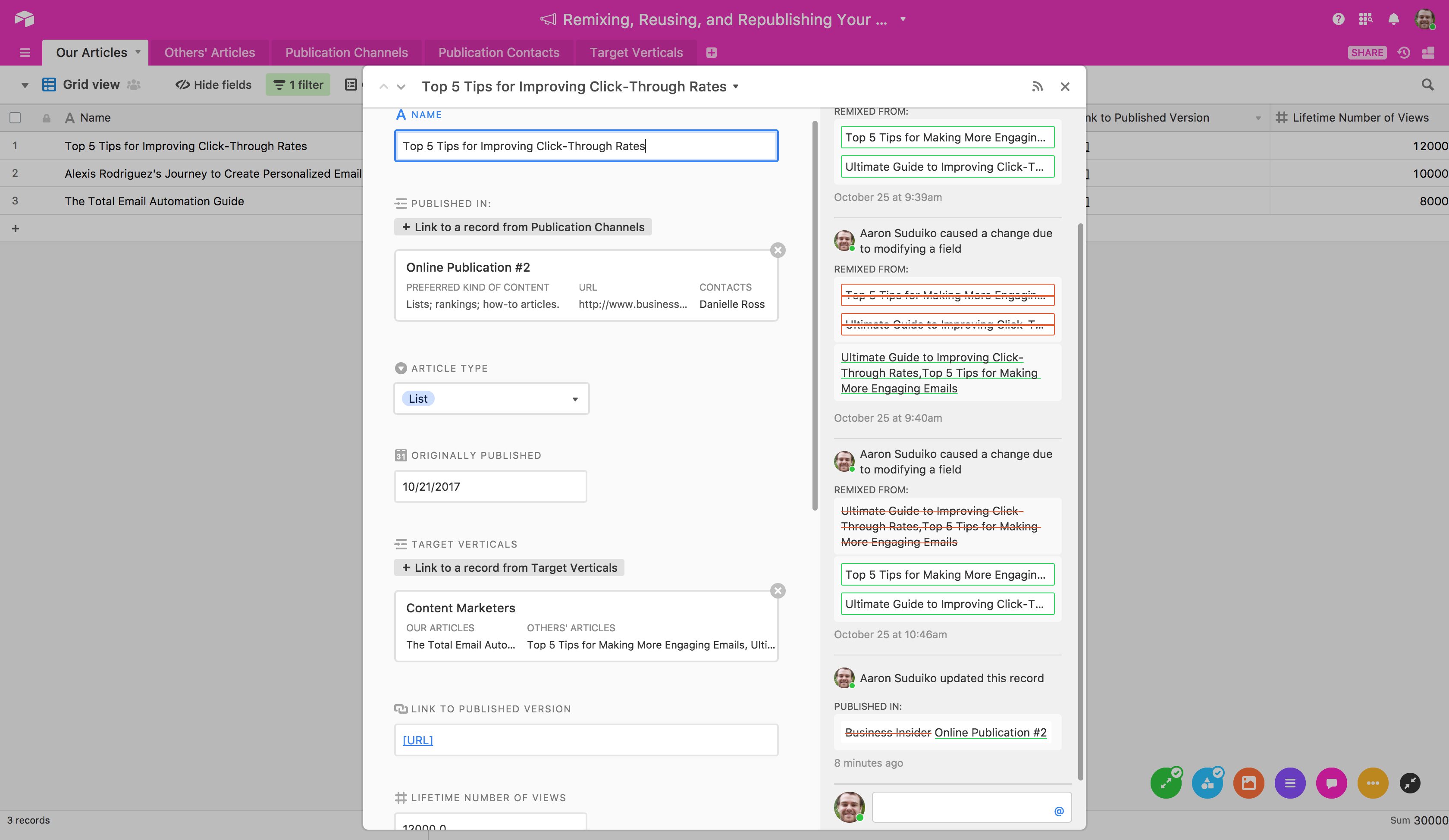
Then, you can link that record to the articles from which it's remixed, to keep track of the source material in case you need to consult it throughout the drafting process.

Once you've learned to remix content, you'll have taken the first step to building a repeatable and scalable content marketing machine.
#2: Reuse your best content in a new format to give it a new audience
Figuring out how to effectively source content ideas is the first step to building a repeatable content machine. The next step is to get more bang for your buck by reusing pieces you've already published. After all, one great blog post is the seed of many more that haven't been written yet.
Which of your articles are based on which others? Without a transparent structure showing you which articles you've reused to create new articles, your content strategy could gradually devolve into making a mess of articles about the same handful of buzzwords. The Our Articles table in your Airtable base lets you track the relationships between articles in an intuitive way.
For example, say you published a successful interview with a well known entrepreneur, Alexis Rodriguez, discussing in detail her efforts to develop email automation that feels truly personal. You can distill the core insights from that interview and publish them as a full-blown email automation guide on Online Publication #1.
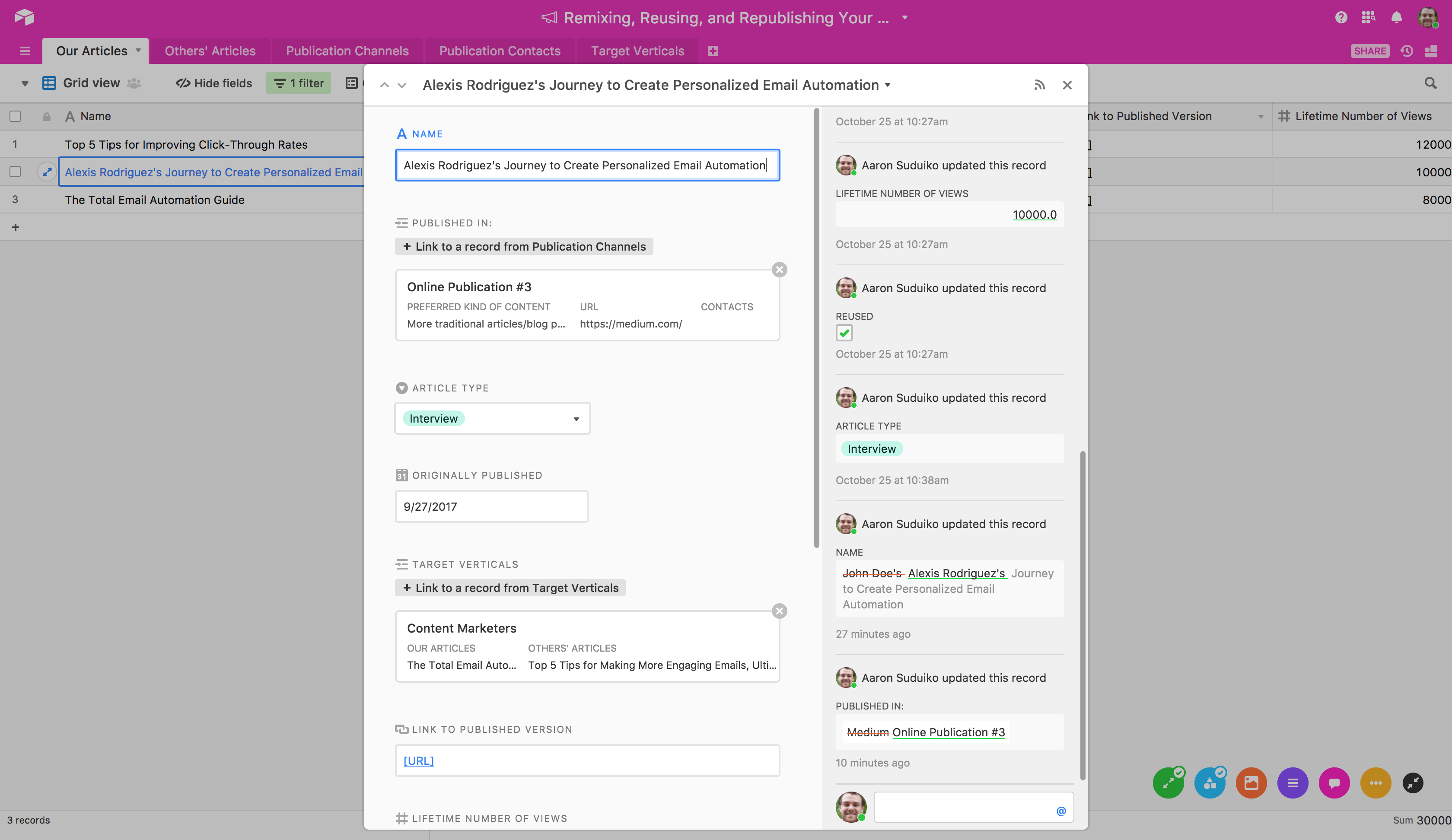
You can enter your reused version of your article in the Our Articles table.
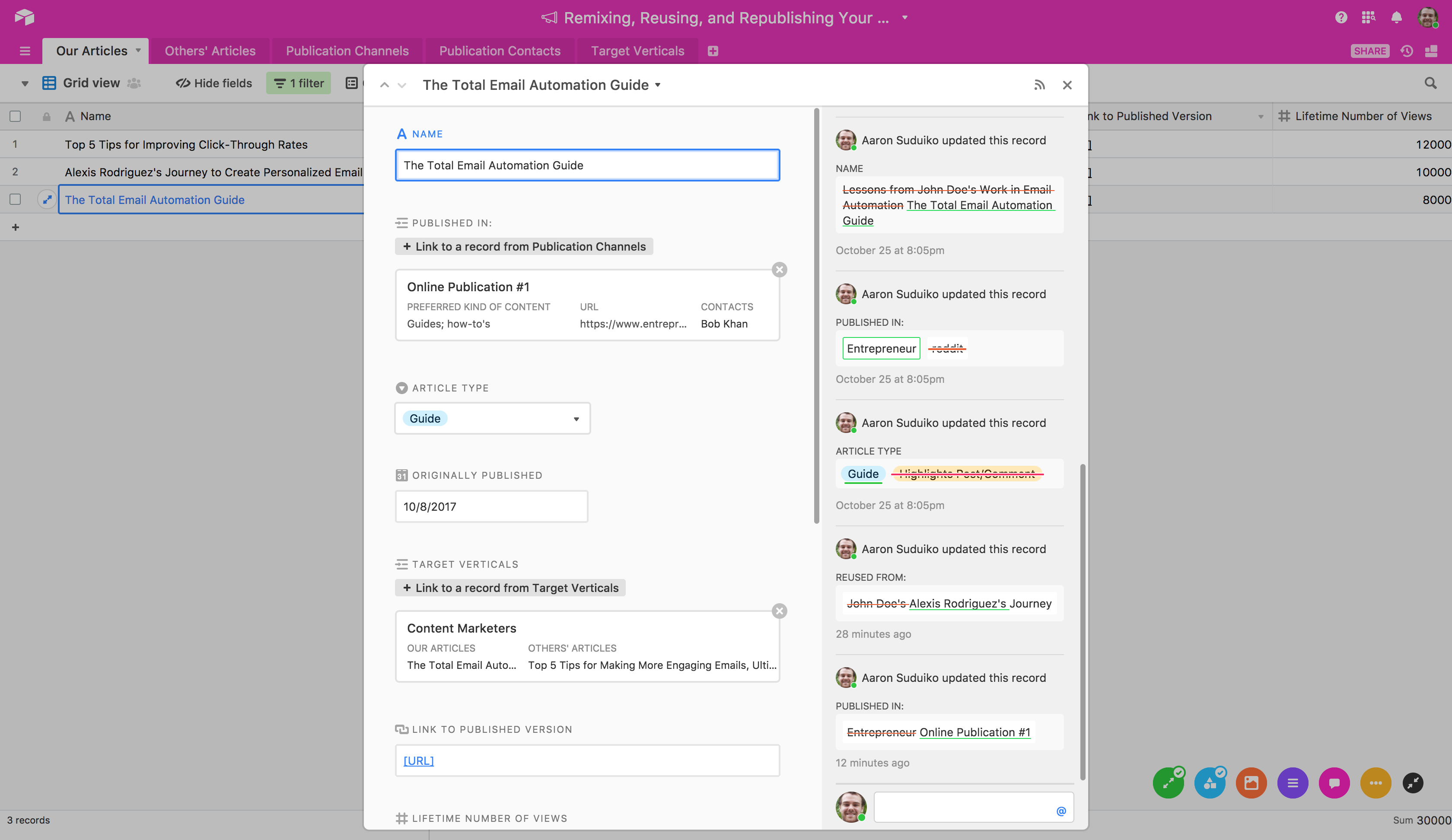
Then, you can link the reused article to the record of the original article, letting you easily wrangle the key points from the original article as you design a brand-new version.

Once you've started reusing content, you'll be able to reliably reach more people with each post. Some people will refuse to look at interviews, but will gladly read guides. Reusing content allows you to reach those people.
#3: Republish your content to give it a signal boost
Once you're remixing and reusing, you've got the repeatable machinery in place to generate high-quality content every day. To make it truly scaleable, you can start republishing: getting your most successful content published in new channels to reach even more people.
Let's imagine you wrote a post for your company's blog (Online Publication #3) about how you doubled the number of replies to your email, and that article was really successful. Why not write to your contact at Online Publication #1 and ask if they'd be interested in publishing this de-risked piece of helpful content?
You can avoid losing track of contact information by keeping it all in the Publication Contacts table of your Airtable base, which cleanly shows everyone you know at each publication and how to contact them.
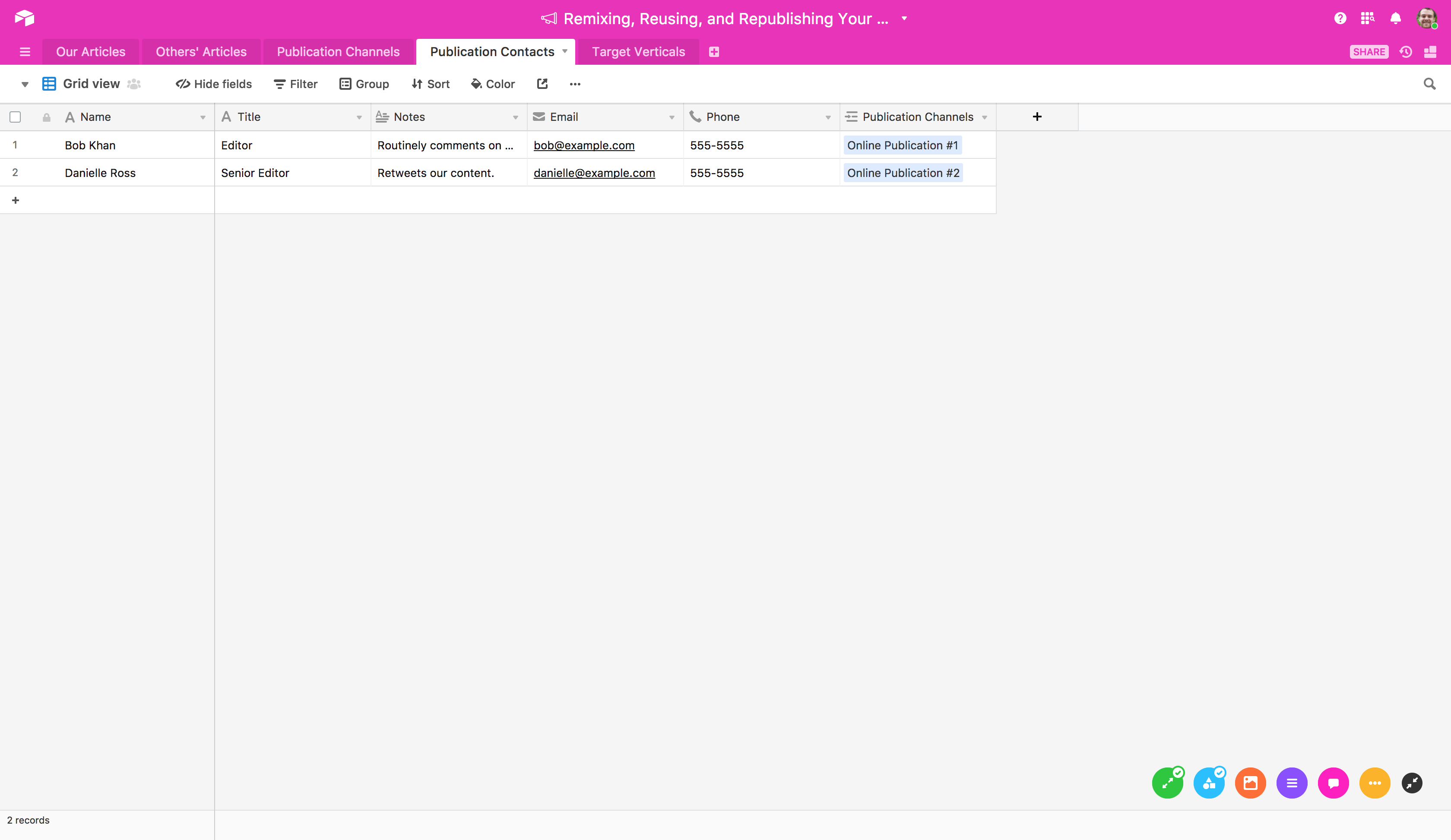
Especially once you've started publishing a single article in multiple channels, you'll want to use its record in the Our Articles table as a way to quickly see all the places every single one of your articles lives online. Once you've republished an article, you can link to both its publication channels in its record in the Our Articles table...
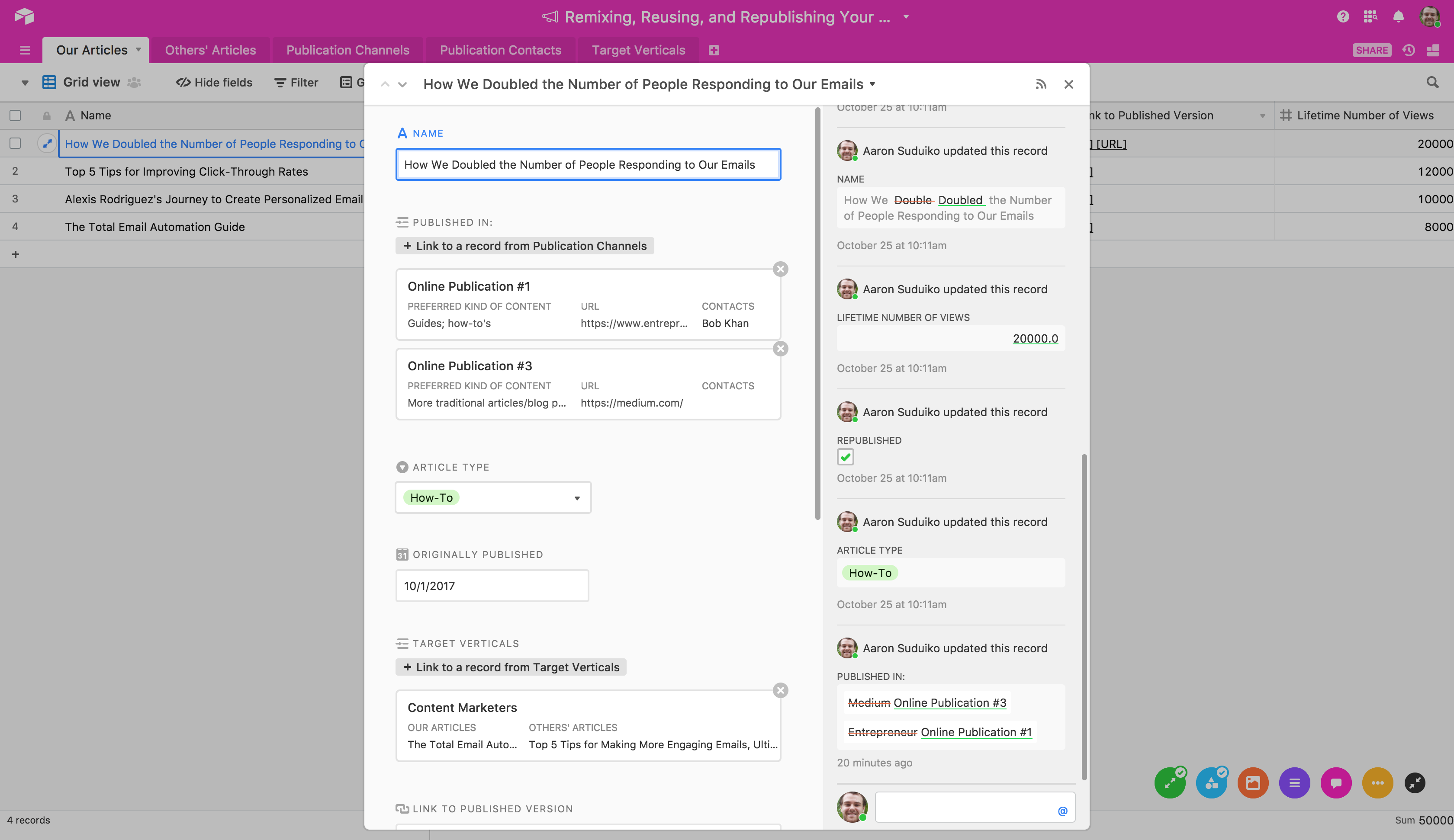
...and check off that it's been republished, so you know which articles to focus on republishing next.

Republishing empowers you to radically increase the number of people in your target audience that your content reaches and helps—and it'll help your company become identified with and recognized for the insights contained in that content.
Make the 3 R's part of how you think about content marketing
If you organize your content marketing around the 3 R's in Airtable, you'll have an efficient and fully scaleable machine for maximizing the impact of every single piece of content you create.
Looking for articles to reuse? Just go to the Our Articles table, and filter out records that have the Reused field checked off—any remaining articles are good candidates for reuse.
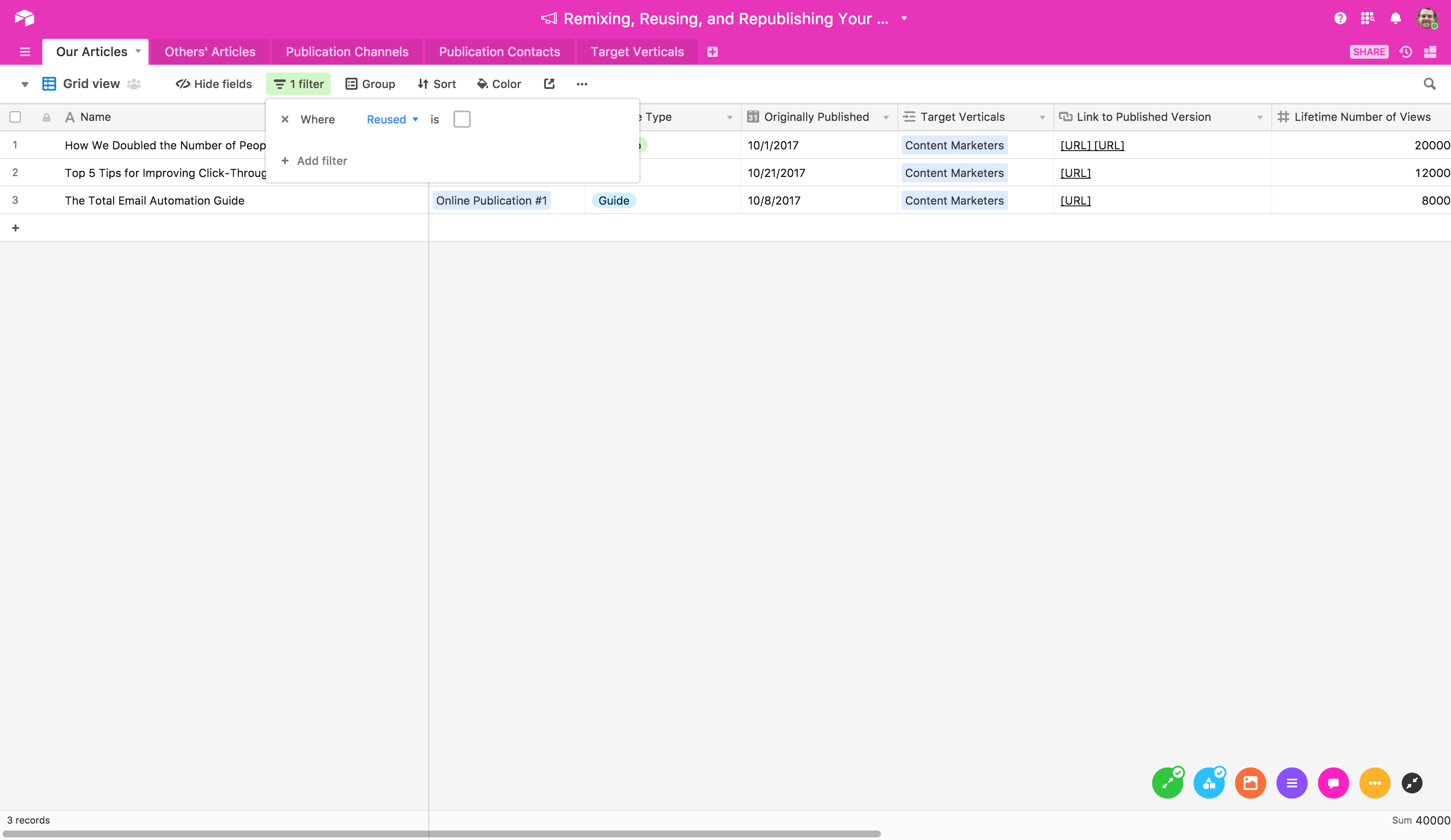
Trying to find the best candidates for content to republish? First, filter out content that's already been republished.

Then, sort the remaining records by number of views to immediately see which articles are the best candidates.
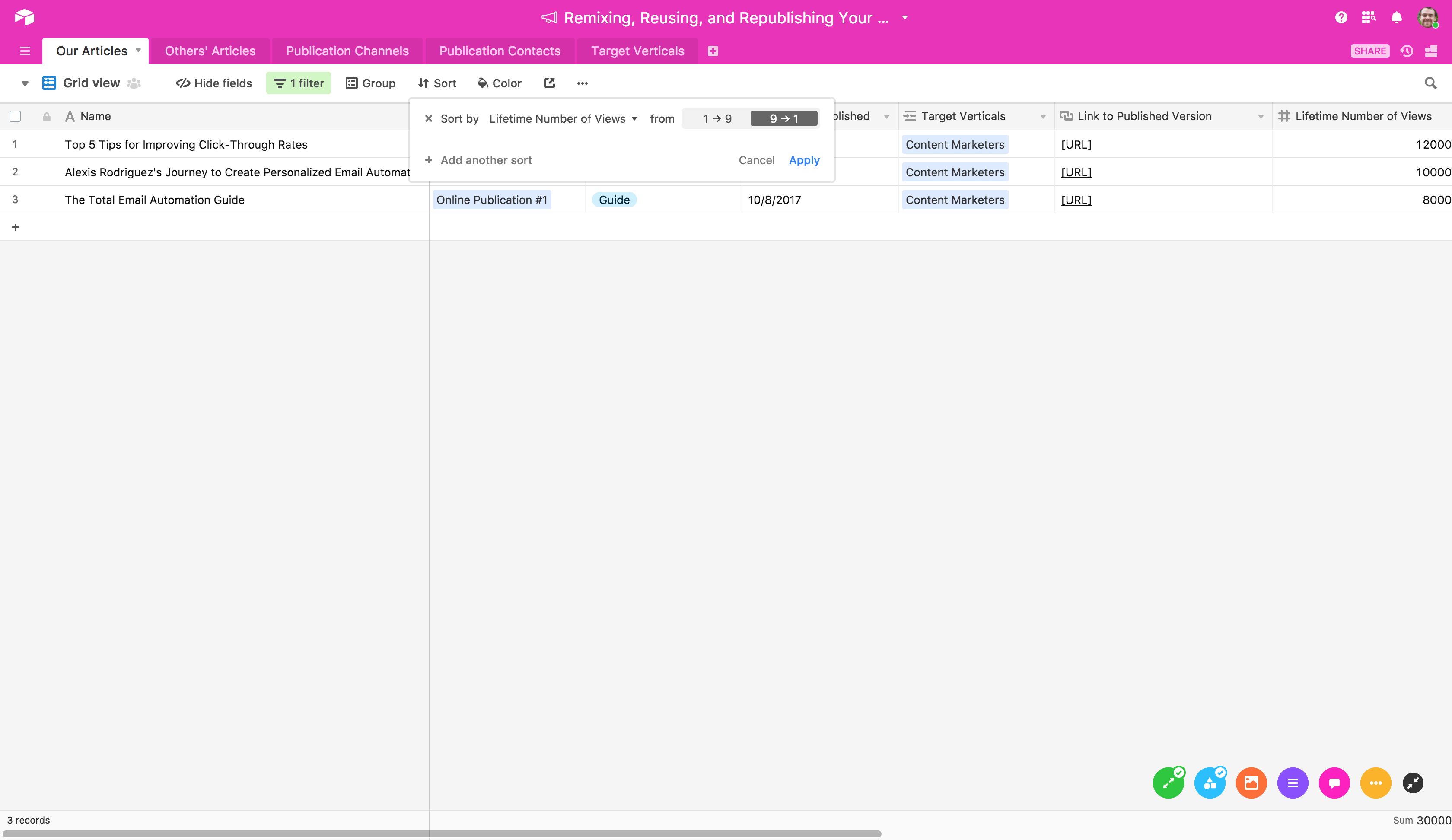
Try to find a way to reuse and republish every one of your most popular pieces, and always be on the lookout for popular articles that you can remix. By using the 3 R's as a routine part of your content creation pipeline, you can help more of your target audience with everything you write.
